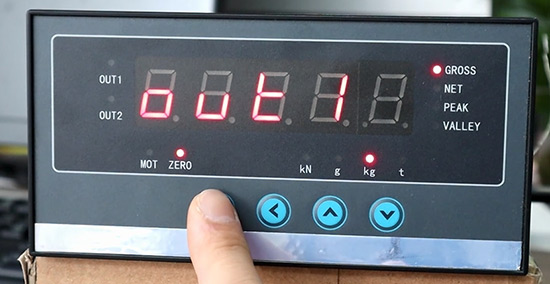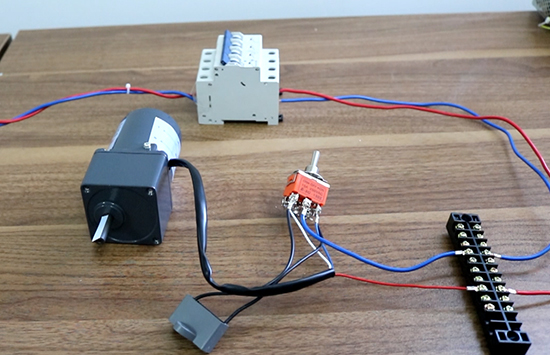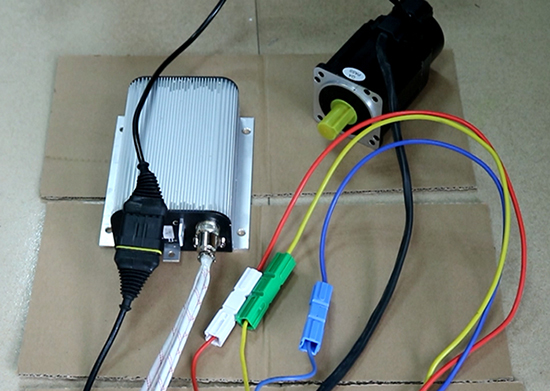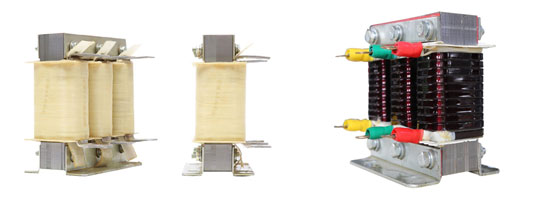Relays and transistors have a similar basic function, that is, both play roles of electronic switches. However, relays and transistors are very different from each other. Now let’s take a quick peek at the differences between relays and transistors.
Blog
ATO 5 Digit Display Controller offers simple calibration and configuration with options for additional outputs such as 4-20 mA/ 0-10 V analogue outputs and communications ports for connection to PC's, PLC's printers and remote displays . It is designed for cooperating with load cells, force sensors and weighing sensors.
Modern industrial sensors are vastly different in principle and structure, and there are so many different types of products on the market. How can we find the ideal sensor for a specific application? When the sensor is selected, the corresponding measurement method and measuring equipment can be determined. The success or failure of measurement results largely depends on whether the selection of sensors is reasonable.
Q: What is a transformer?
A: A transformer is a device that step up or step down the voltage in an AC circuit. It converts the voltage of any value into the voltage value we need at the same frequency to meet the requirements for the delivery, distribution and use of electrical energy. For example, the electricity generated by the power plant has a low voltage level, and the voltage must be raised to be transported to a remote power consumption area. And the power supply area must be turned down to a suitable voltage level to supply power equipment and daily power equipment.
ATO provides two categories of capacitors: low voltage shunt power capacitor of the self-healing type (three-phase series) and self-healing low voltage shunt capacitor (single phase, for mineral thermal oven).
Self-healing low voltage shunt power capacitors are used in 50Hz and 6oHz power system. The function of these capacitors contains: reducing reactive power loss, improving voltage quality, enlarging capacity of voltage transformer, etc.
Even though the capacitor’s price varies with its capacity, ATO self-healing three/single phase shunt power capacitors are inexpensive. Here is the price list and welcome to select the best one for you!
With the rapid development of industrial automation, the variable frequency drive, used for frequency conversion debugging, is thereof widely used. As an important role of frequency conversion speed regulation and energy saving, VFD is mainly used to control the AC motor's power control equipment by changing the frequency of the motor's working power supply. It's not only advantageous for improving the enterprise's process and production level, but also plays an important role in energy saving. But how should we choose an appropriate VFD?
The ATO 1000-50000mm draw-wire displacement sensor has a small mounting size, compact structure and high precision. Its measuring range can be 1000mm/2500mm/5000mm or even 50000mm. This draw-wire displacement sensor is particularly suitable for linear rolling guide system, hydraulic cylinder system, testing machine, telescopic system (forklift, press, lifter, pipe bender, bending machine, etc), crane or cable winch, reservoir dam protection system, gate opening control system, pressure machine, hydraulic universal experimental machinery, warehouse location position, length and displacement measurement and position control of various industrial instruments.
ATO AC gear motor is composed of a single phase AC torque motor and a gearbox, which has high starting torque and sloping characteristics, allowing speed control simply by changing the voltage of the power supply. The special rotor provides excellent performance for holding, winding, andtensioning applications. Next, we will introduce how to wire and test a ATO AC torque motor with gearbox?
Generally, the wiring principle of brushless DC motor is basically similar. Next, we choose the model ATO-BLDC-40030 of ATO high torque BLDC motor and its matching controller ATO-BLDC-TH-G as examples to show you how to connect the motor to the controller and make the motor rotate.
A gas detector or gas monitor is a device to detect the concentration of a gas in one area. It is widely used to monitor the leakage of gas and give an alarm to ensure the safety of life and production. ATO offers a series of gas detectors to monitor the leakage of ammonia, carbon monoxide, hydrogen sulfide, chlorine, hydrogen etc. There are two types - portable and fixed - for different requirements of applications. In addition, the portable gas detectors are available for diffusion-type and pump-type. Here is listed some features and prices of ATO gas detectors for your reference.
ATO gas detector features
- Adopt high-accuracy sensor with high precise detection.
- Two-stage alarm with sound and light, and alarm point is settable.
- With display, easy to readout.
- Rugged and durable housing.
- Portable gas detectors has rechargeable lithiumpolymer battery with large capacity.
What is the frequency converter? Frequency converter outputs the AC power to pure sine wave after the transformation of AC→DC→AC, the output frequency and voltage can be adjusted within a certain range. It is different from the variable frequency drive (VFD) used for motor speed regulation, and also different from the common AC regulated power supply. An ideal AC power supply is characterized by stable frequency, stable voltage, zero internal resistance and pure sinusoidal voltage waveform (without distortion). Frequency converter is quite close to the ideal AC power supply, so more and more countries use it as standard power supply to provide the best power supply environment for electrical appliances, so as to assess the technical performance of electrical appliances.
Loop powered signal isolator is one type of signal isolator with a power supply module. The function of the loop powered signal isolator is to isolate the current source signal input to the loop powered isolator and output a DC signal that is isolated from and proportional to the input signal.
Loop powered signal isolators use the signal current in the input loop to power the meter (take out some energy of input signal inside the isolator to drive the isolator), without any external power supply.
Correct selection of the frequency converter or frequency changer is crucial for the normal operation of electronic control system for mechanical equipment. To buy the frequency converter, according to the type of mechanical equipment, load torque characteristics, speed regulation range, static speed accuracy, starting torque and the requirements of the use environment, and then choose the suitable frequency converter.
Before selecting the frequency converter (AC power supply), we should firstly make clear the input mode of load, it is three phase or single phase? Secondly, determine the load characteristics, such as resistive load, inductive load, capacitive load, mixed load. Since different load characteristics will cause different inrush currents when the load starts, the influence of inrush current must be considered when buying the frequency converter, otherwise converter will not output normally.
As a matter of fact, the main function of the series reactor is to restrain the higher harmonic or limit the switching surge, prevent the harmonic wave from endangering the capacitor, avoiding the excessive amplification and resonance generation of the access of the capacitor to the power grid harmonic. As to the increasingly automatic life, the harmonic problem of the power system is becoming increasingly serious. We have to take measures to process the harmonic, because a too high harmonic will seriously affect the normal operation of the device and electrical system.
Solid state relays (SSRs) have plenty of types and models, so its input control methods and control circuits are numerous accordingly. The common characteristics of solid state relay (SSR) lie in the small drive current or drive voltage, namely, the on-off the SSR can be controlled by just inputting a small signal. If it is required to realize effective and reliable control, its input signal should reach a given value. As to the requirement to the working current of the input loop, it is recommended to switch on when the value is 5-10mA and switch off when the value is lower than 1mA. As to the requirement of the working voltage of the input terminal, it is generally no lower than 3V in switch on, and lower than 1V in switch off. Of course, because of the different product characteristics and different manufacturers, the requirement to the input current or resistance value is also different. Therefore, in using and designing the circuit, the selection and design can be conducted according to the specification and operation occasions on the basis of solid state relay (SSR) type. The following text introduces some basic methods and circuits of SSR input control.
Load capacity of soft starter mainly refers to the overload capacity. Due to different working system, actual load capacity of soft starter is also different. For example, the soft starter generally bears a current of 2~4 times of rated current at starting process, and the duration is within 60s. For long-term working systems, the soft starter actually works under short-term overload during starting process. But for short-term working systems, the soft starter actually works under long-term overload during starting process. Thermal capacity of power semiconductor devices (thyristors) is very small, so the overload capacity of devices mainly depends on the overload capacity of power conductor devices and heat dissipation capacity of soft starters.
Image sensor is an important part of the industrial camera. According to difference of the original, it can be divided into CCD and CMOS sensors. In the last 25 years of the last century, CCD technology has been leading the trend of the imaging sensor. It is a high-resolution and high-quality image sensor which can be integrated on a very small chip. However, in recent years, with the rapid development of the semiconductor manufacturing technology, the size of the integrated transistor is becoming smaller and smaller, and the performance is much better. CMOS image sensor obtains rapid development in the recent years, and it seems CMOS image sensor has overtaken CCD image sensor. CMOS provides the performance on a par with CCD in the mid-end and low-end applications, and has a significant advantage in price. With the development of technology, CMOS will also occupy a space in the high-end application field. This paper makes a detailed explanation to the difference between CCD and CMOS image sensors in the industrial camera.
Output line reactor is also called as the motor reactor. It is mainly used in the industrial automation system, especially occasions with frequency converter, to extend the valid transmission distance of the frequency converter, effectively restrain the transient high voltage in switching on/off the IGBT module of the frequency converter. It is suitable for compensating the distributed capacitance, restraining the output harmonic current, effectively protecting the frequency converter and improving the power factor, with an expectation to reduce the pollution of the harmonic current generated by the rectification unit to the power grid.
Have you ever though why your motor has a shorter service life than that of others? Let us tell you, your motor may need a soft starter. Generally, the motor shall adopt a soft starter as soon as its power exceeds 20hp (15kW), otherwise it will affect the use and operation of other equipment in power grid and damage the motor. Why should the soft start controller be used? What are the benefits of using motor soft starter?
One of the other manufacturing reasons for the high noise of the reactor lies in the insufficient clamp force of the iron core. The low iron core fastening force will increase the operation noise of the reactor. As the experience indicates, when the pressure intensity of the iron core clamp force is 0.8~1.2MPa, the noise of the reactor is the lowest. In addition to this, the compression screw and clamp nut of the iron core sheet should be equipped with an additional lock net, preventing from the looseness of the nut caused by the vibration of the iron core sheet in operation, so as to result in the high noise degree.


